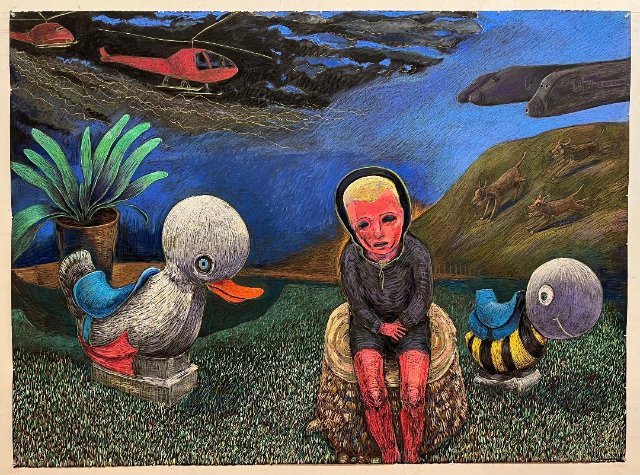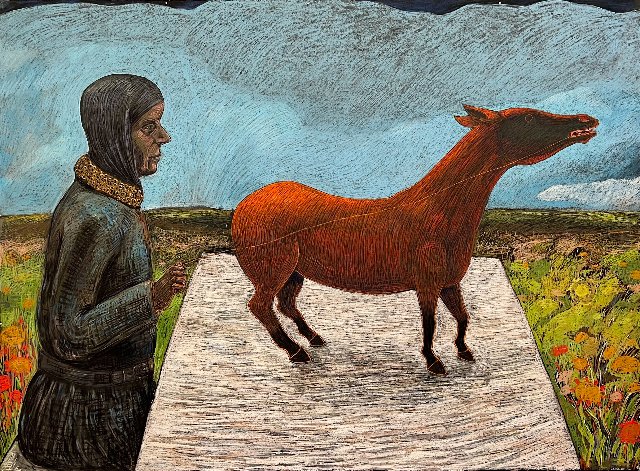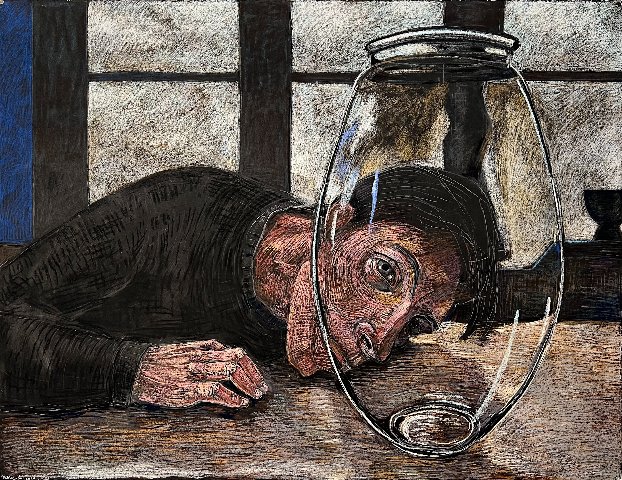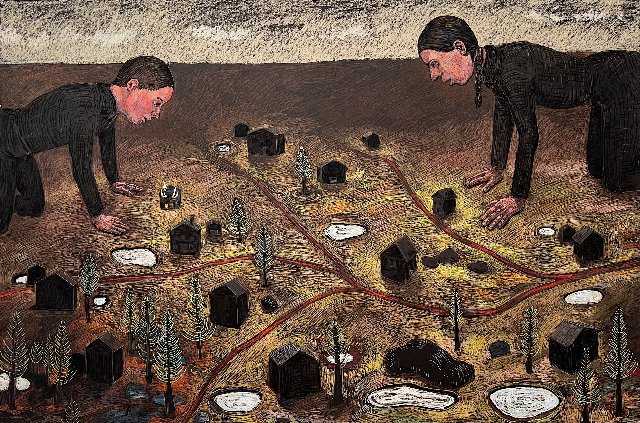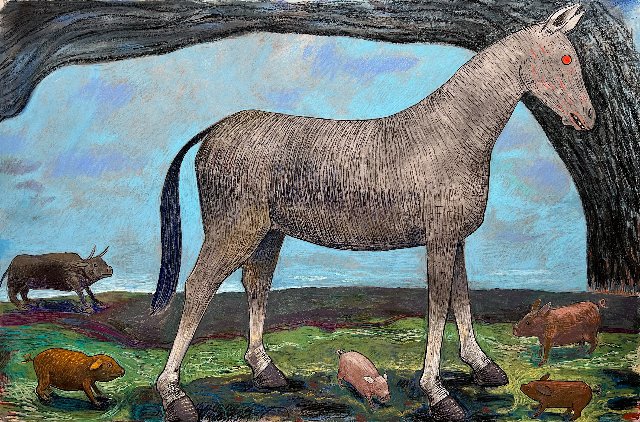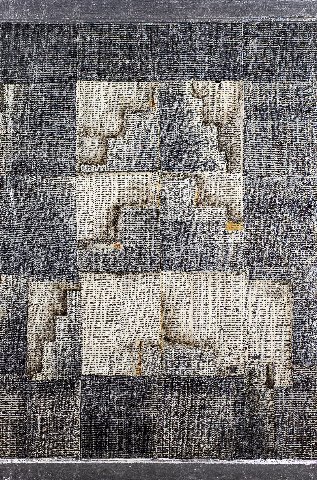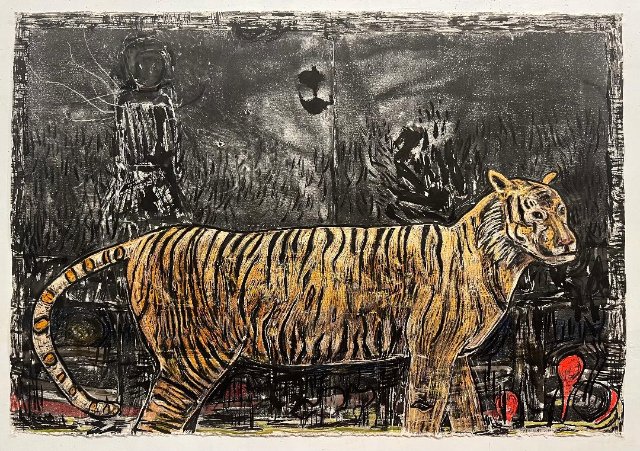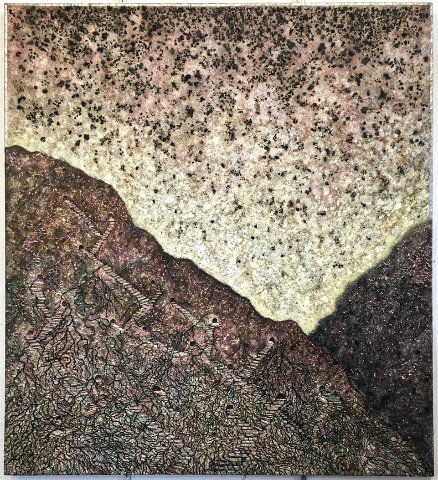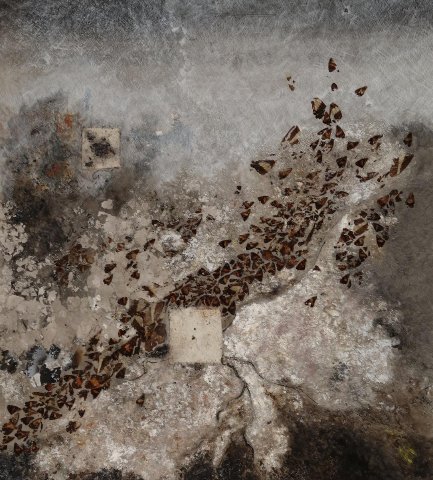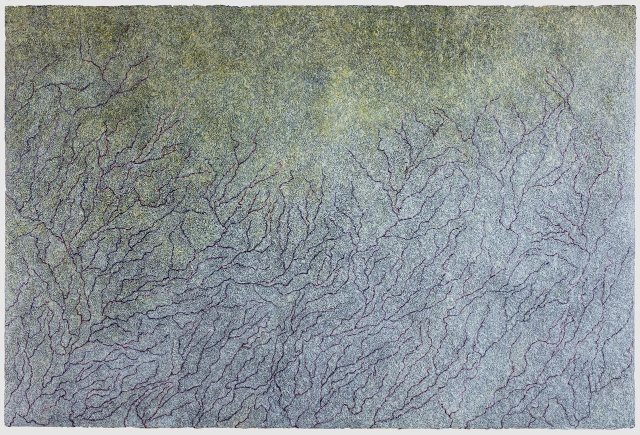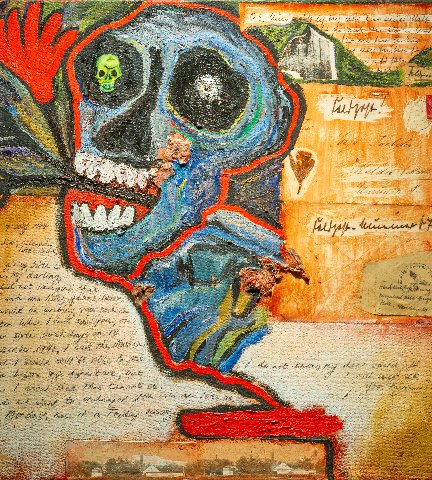Gloucester Artists Gabrielle Barzaghi and Susan Erony
At Matthew Swift Gallery
By: Charles Giuliano - Nov 08, 2024
Gabrielle Barzaghi and Susan Erony
Matthew Swift Gallery
Gloucester, Mass.
Through November 7, 2024
Through the early decades of the 20th century generations of America’s renowned artists lived and worked on Cape Ann. Feeling rejected and ignored the most progressive artists, including Hans Hofmann, Milton Avery, Adolph Gottlieb and Mark Rothko, departed in despair. The modernist Umberto Romano, the current subject of an exhibition at the Cape Ann Museum held on until the 1960s when he moved his school and practice to Provincetown.
That would seem to have been the last straw for progressive artists residing on Cape Ann. Indifference to contemporary art, including lackluster support from CAM continues. While framed more as apathy than hostility that resistance to progressive art remains fixed in the narrative of Gloucester’s art history.
Against all odds, however, there is a strong and unique force of contemporary art that prevails. In 2013 Matthew Swift founded Trident Gallery which has subsequently been renamed Matthew Swift Gallery. The program presents the best of contemporary Gloucester artists in contrast to sentimental representational art that has come to signify Cape Ann. It is the last gasp of a grand tradition that entailed Winslow Homer, Fitz Henry Lane, John Sloan, Childe Hassam, Edward Hopper, Marsden Hartrley and Stuart Davis to mention but a few.The spectacular topography of land and sea continues to inspire a broad range of artists and writers. Reflecting change current art is less site specific but inhales the same salt air. It’s work created to the chorus of squawking gulls, walks through primeval Dog Town Common, or cold abandoned beaches when summer tourism yields to the beat of winter dancers prancing on sand.
During a recent visit we viewed two of the best of the current Gloucester artists- Gabrielle Barzaghi and Susan Erony- at Matthew Swift Gallery. Though strikingly different in style and execution there was a compelling synergy in this pairing of kindred spirits.
The large works on paper by Barzaghi explore an inventive mythology while the multi media painting of Erony are inspired by cosmology. Combined they convey a macro and micro mantra on the passion and enigma of America.
While Swift showed Barzaghi just last year, as he told me, he was inspired to create this new exhibition “Because she has been on fire in the studio.”
Gabe, as she is known to friends, is inspired by the heritage of her White Russian ancestors. The once prosperous family lost everything to marauding Bolsheviks
An Eastern European sensibility pervades the work with images of children as well as peasants and babushkas. A hauntingly hilarious work “Putin’s Pony” depicts one such woman holding the leash/ bridle of a pony on a platform. It’s the kind of image, with its absurd ambivalence, that makes one want to laugh or cry.
The images are strident and specific but puzzling to viewers. While clearly narratives they confound ready interpretation. She draws us into a private world which we are invited to navigate in our individual manner.
In “Russian Playground,” for example, we see a girl seated on a stump tilting to the left. She is leaning toward a large playground duck with another, a bug, on the other side. Her expression is grim reflecting, perhaps, the pair of helicopters on the upper left. To the right, three howling dogs scamper down a hill. In the body of water beyond are three indistinct shapes that might be whales or submarines. While intrigued I have no ready interpretation of what the work means.
What to make of “Dostoyevsky’s Jar?” A melancholy boy leans his head on a table to look through a large jar. The view of windows behind him is distorted by the shape of the glass vessel. The strong drawing and graphic sensibility reminds me of the work of Paula Modersohn- Becker (German, 1875-1907).
In “Fear Game” a boy on the left and a girl with braids on the right are on hands and knees staring down on a miniature village below them. It’s the kind of model associated with Lionel Trains.
”There’s something happening here/ But what it is ain’t exactly clear/There’s a man with a gun over there/ A-telling me I got to be aware. I think its time we stop/ Children what’s that sound?/ Everbody look what’s going down.”
Horses and tigers figure into the works as well as a bear attacking a man. They are large, strong and compelling drawings which evoke questions and enigmas. Why is the horse’s eye round and red? Why is the head of a woman lying on the ground beneath a snarling tiger? She appears to be indifferent to the potential danger. Arguably she is a surrogate for us the viewers.
Swift Gallery occupies what formerly was a bank. The works of Susan Erony are installed in its “Vault.” This smaller space brings us close to the richly detailed works with their obsessively applied multi media surfaces. Given their meticulous process these labor intensive paintings take considerable time to produce. The making of them becomes a ritual mantra which we as viewers must emulate in order to enter them. No reproduction can convey the intensity of engaging with a maze of trance inducing surfaces.
Her obsessive process, and all of its minutiae, evoke the devotional practice of medieval monks. Gazing intensely at her paintings reminded me of bending over in dim lighting to view a page of the Book of Kells in the library of Dublin’s Trinity College.
Rather like wearing a hair shirt as a reminder of mortality, Erony takes on impossible tasks and renders them quotidian. In an earlier work, for example, she transcribed the long and dauntingly complex Maximus Poems by Gloucester writer Charles Olson. The premise of the task was negotiating the epic poem word by word.
That informs the approach to engaging with works grouped as “American Trouble.” Thematically, they could not be more timely, but this is not your garden variety agit-prop.
Gamely, Swift discussed “Where in the World” (2018). It resembles a Japanese kakemono or hanging scroll. There are lead glazed bands above and below. I asked if it can be folded. There was an explanation of how it was formed with multiple layers and difficulties of hanging and storage.
”This is a piece that I redid many times” Erony wrote. “A repeated sentence reads ‘Where in the world did I ever get the idea that people are supposed to be good?’ I wrote that line many years ago when I was trying to understand why I felt so much grief…”
“Hiding Places” and its schematics of refuge were inspired by the pandemic which hit Erony and her husband. That evoked a mantra of finding places to escape while the fever ran its course. We view what appear to be overlapping mountainsides. The sky is cluttered with some kind of fallout. The side of the foreground mountain has multiple sets of stairs leading to numerous caves. Our troubled spirit seeks refuge in any one of them.
While spending three weeks at the Manship Artists Residency she worked on “1.6.21.” “I used the time to understand how to approach a national crisis we are all living through.”
The resultant work is all the more poignant and resonant as now President Elect Trump, will indeed escape prosecution for the day in which he led an insurrection against Congress and its Constitution.
The “sky” of this work is filled with small paper boxes which resemble sarcophagi. There is a mesh of tendril-like growth reaching up from earth and becoming entangled with the floating forms.
“This is a mourning piece for America, (dedicated to her immigrant father), and I put Kafka’s words into the piece to say what I couldn’t- that there is always something to complain about, always something to criticize…”
As it was in Germany in the 1930s, now for the next four years and generations to come, Americans will be asked how it was allowed to happen. These works by Erony will come to be regarded as iconic to that dialogue. Like Olson in another time Erony underscores Gloucester as polis. Cape Ann juts out into the sea pervading our hearts and minds.

